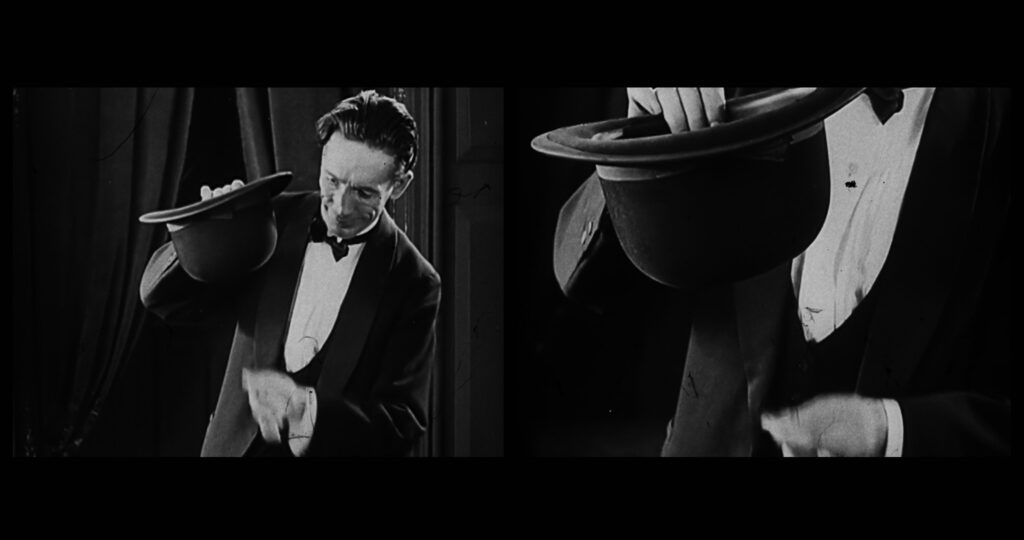With ‘The Cinema Within,’ Chad Freidrichs Uses Cinematic Sleight of Hand To Underscore the Often Slippery Nature of Perception
This is a fascinating documentary about the complex relationship between the eye, the brain, our memory, and the abiding weight of context.

A Spanish painter, sculptor, and printmaker, Pablo Picasso, famously stated that “art is a lie that makes us realize truth,” acknowledging that an illusion proffered by an artist can tap into and elaborate upon experiences that elide rational, or at least mundane, explanation. A similar sentiment was touched upon by a character in Jean Luc-Godard’s “Le Petit Soldat” (1963), to wit: “Cinema is truth 24 times a second, and every cut is a lie.”
A new documentary by Chad Freidrichs, “The Cinema Within,” explores the complex dynamic that can accrue from the formal properties of a work of art, the viewer’s perception of them, and the “cut” mentioned above. Mr. Freidrichs gathered a range of experts who have made it their life’s work to investigate the physical and psychological reverberations occasioned by the quick and careful flitting of pictures — that is to say, the movies.
At the center of “The Cinema Within” are a scholar and an editor, respectively Sermin Ildirar and Walter Murch. Ms. Ildirar is a film scholar with a Ph.D. in cognitive psychology from the University of London. An article of hers from 2010, “Watching Film for the First Time: How Adult Viewers Interpret Perceptual Discontinuities in Film,” served as a prompt for Mr. Freidrichs. How did Ms. Ildirar find adults who had never seen a movie? She went to Turkey.
Among the mountainous environs of Isparta is an isolated population whose exposure to the modern world is limited: One story has it that when a car appeared in their midst, the populace stood in awe. Working with a Ph.D. supervisor, Stephan Schwan, Ms. Ildirar traveled to this remote village, interviewed its inhabitants, and showed clips that she had filmed of their neighbors. The initial reactions of those who had never seen a movie? Laughter and joy.

Cut, then, to Mr. Murch, a sober-sided film editor and sound mixer of no small repute, having been nominated for nine Academy Awards and winning three of the coveted statuettes, for his efforts on “Apocalypse Now” (1979) and “The English Patient” (1996). But it was his handiwork on Francis Ford Coppola’s “The Conversation” (1974) that occasioned a revelation about the nature of his craft. Scenes from that picture are a guidepost for “The Cinema Within.”
Other folks interviewed include a cognitive neuroscientist, a perceptual psychologist, a film historian, and one of the world’s foremost experts on blinking, Tamamo Nakano. Yes, that’s right, blinking: Among Ms. Nakano’s discoveries is how audiences watching the television program “Mr. Bean” would, eventually and without fail, synchronize in their blinking. This involuntary movement is also key to Mr. Murch’s method of achieving a naturalistic flow in the editing of movies.
Mr. Freidrichs underscores the often slippery nature of perception by cinematic sleight of hand, editing the film in such a way that who or what we are watching never holds true for long. Snippets of films, both new and old, showcase the characteristics and conventions of editing — some of which are, in theory, barely tenable. A professor at Washington University at St. Louis, Jeff Zaks, avers “there’s nothing as jumpy and disrupted and interrupted as a whole bunch of film edits.” Pregnant pause. “With one exception.”
What that might be would spoil Mr. Freidrich’s movie, as would disclosing the upshot of Ms. Ildirar’s travels to the remote corners of Turkey. Suffice it to say that there are surprises at hand as well as confirmation that perception is nowhere near to being completely understood. “The Cinema Within” is a fascinating film about the complex relationship between the eye, the brain, our memory, and the abiding weight of context. Is it for cinema nerds, only? Not by a long shot.

